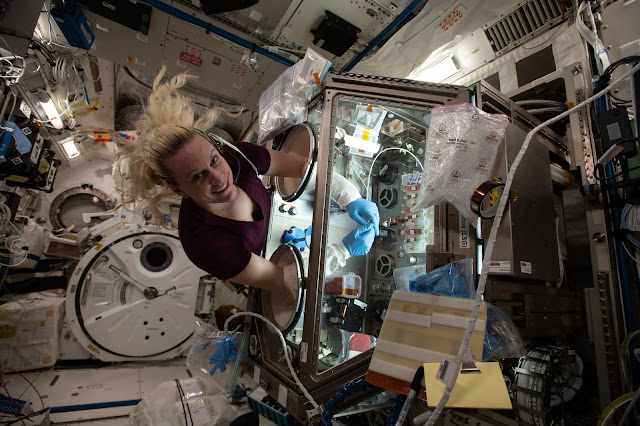NASA - Parker Solar Probe Mission patch.
Jan. 9, 2021
Researchers from the Laboratory for Atmospheric and Space Physics (LASP) at the University of Colorado Boulder are diving into the dusty environment that surrounds the sun—a search that could help to reveal how planets like Earth come into being.
The pursuit comes by way of NASA’s Parker Solar Probe—a pioneering mission that has taken scientists closer to Earth’s home star than any spacecraft to date. Over two years, the probe has circled the sun six times, hitting maximum speeds of roughly 290,000 miles per hour.
Image above: Parker Solar Probe circles in front of the sun in this artist rendering. (Credits: NASA, Johns Hopkins APL, Steve Gribben).
In the process, the Parker team has learned a lot about the microscopic grains of dust that lie just beyond the sun’s atmosphere, said David Malaspina, a space plasma physicist at LASP. In new research, for example, he and his colleagues discovered that the densities of these bits of rock and ice seem to vary wildly over the span of months—not something scientists were expecting.
“Every time we go into a new orbit, and we think we understand what we’re seeing around the sun, nature goes and surprises us,” said Malaspina, also an assistant professor in the Department of Astrophysical and Planetary Sciences.
He presented the group’s results this week at the 2020 virtual fall meeting of the American Geophysical Union (AGU).
Malaspina said that dust can give researchers an unexpected, and tiny, window into the processes that formed Earth and its neighboring planets more than 4.5 billion years ago.
“By learning how our star processes dust, we can extrapolate that to other solar systems to learn more about planet formation and how a cloud of dust becomes a solar system,” he said.
Solar Dyson
The area just around the sun, a hot and radiation-rich environment, is often dustier than you might imagine, Malaspina said. It contains more grains of dust by volume than most other open expanses of space in the solar system. That’s because the star, through gravity and other forces, pulls dust toward it from millions to billions of miles away, a bit like a vacuum cleaner.
But this vacuum cleaner is imperfect. As dust particles get closer to the sun, its radiation pushes on them more and more—some of those grains of dust will begin to blow in the other direction and can even fly out of the solar system entirely. The Wide-Field Imager for Parker Solar Probe (WISPR) instrument suite onboard the spacecraft found the first evidence for the existence of this dust-devoid region, known as the dust-free zone, more than 90 years after it was predicted.
“What you get is this really interesting environment where all of these particles are moving inward, but once they reach the near-sun environment, they can be blown away,” Malaspina said.
Image above: Photos taken by the Wide-Field Imager for Parker Solar Probe (WISPR) showing the solar wind streaming past the spacecraft. These flows of energy can carry small grains of dust away from the sun and even out of the solar system entirely. (Credits: NASA/Naval Research Laboratory/Parker Solar Probe).
Since launching in 2018, Parker Solar Probe—built and operated by the Johns Hopkins Applied Physics Laboratory, which also leads the mission for NASA—has flown to within about 11.6 million miles of the Sun’s surface.
On each of Parker’s orbits around the sun, the spacecraft collided with thousands of grains of dust. Many of these particles vaporize on the spot, creating a small burst of charged particles that the probe can detect using the five antennae that are part of its FIELDS Experiment. LASP plays an important role in this experiment, which is led by the University of California, Berkeley. Think of it like studying insect populations by counting the splatters on your car’s windshield.
“You get a small puff of plasma,” Malaspina said. “By looking at these spikes, we can understand how many dust impacts we’re getting hit by.”
New mysteries
Malaspina and his colleagues were originally hoping to use those puffs to pinpoint where exactly the solar system’s inward-flying dust becomes outward-flying dust. But they stumbled on something puzzling in the process: The concentrations of dust that the team recorded seemed to vary by as much as 50% between Parker’s six orbits around the Sun.
“That’s really interesting because the timescale that it takes for dust to move in toward the Sun is thousands to millions of years,” Malaspina said. “So how do we get variation in just three or four months?”
Parker Solar Probe. Animation Credits: NASA/Johns Hopkins APL
This dusty environment, in other words, may be a lot more complicated and fast-shifting than scientists previously thought. Malaspina said that the team will need to wait for Parker to complete more orbits to know exactly what’s happening. He’s just excited to be part of this once-in-a-lifetime chance to run a finger along the Sun’s dusty shelves.
“This is the only in-situ measurement we are going to get for a long time in the inner solar system,” Malaspina said. “We’re trying to make the best of it and learn as much as we can.”
Related links:
2020 virtual fall meeting of the American Geophysical Union (AGU): https://www.agu.org/fall-meeting
Department of Astrophysical and Planetary Sciences: https://www.colorado.edu/aps/
Laboratory for Atmospheric and Space Physics (LASP): https://lasp.colorado.edu/home/
NASA’s Parker Solar Probe: https://www.nasa.gov/content/goddard/parker-solar-probe/
Images (mentioned), Animation (mentioned), Text, Credits: NASA/University of Colorado Boulder/By Daniel Strain.
Greetings, Orbiter.ch




















































